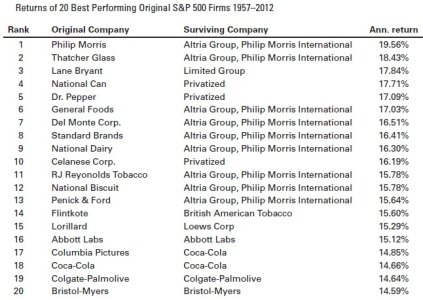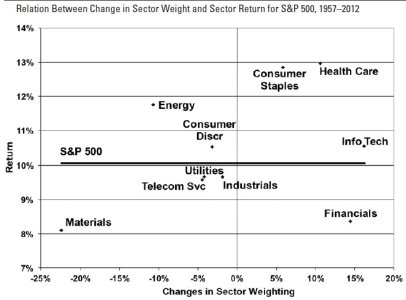Nautilus70
G.od, Gold, Guns
- Registrato
- 28/2/07
- Messaggi
- 20.343
- Punti reazioni
- 811
Si', mai "total liabilities" sono i debiti...non gli "assets"
Total Stockholder Equity + Total Liabilities = Total Assets
Follow along with the video below to see how to install our site as a web app on your home screen.
Nota: This feature may not be available in some browsers.
Si', mai "total liabilities" sono i debiti...non gli "assets"
Prendendo alla lettera potresti avere ragione, ma io con "total capitalization, including all bank debt." intendo il "total shareholders equity" piu' tutti i debiti.no, adesso che guardo bene, stai andando da un'altra parte...la "capitalizzazione" è da intendere come il valore totale di mercato (quello che il mercato attribuisce all'intera azienda come entità produttiva e ciò comprende pure...le prospettive future di crescità) e non i "total assets"...
guarda bene:
lui dice:
cioè il "book al netto" (shareholders equity) e...punto! non va oltre...
cioè l'intero valore di mercato (che includono i debiti) a determinato momento...
se lui avesse voluto dire come stai interpretando te...avrebbe detto:

Hai o avete altre letture da consigliare tema Value investing, analisi fondamentale, stocks ecc?






in un momento di follia mi è venuta l'idea di tradurre alcune parti dei celebri capitoli 8 e 20 dell'Intelligent investor di Graham, tralasciando volutamente esempi, dati, indicazioni pratiche,ecc e selezionando quei passi che descrivono l'attegiamento mentale giusto per un value investor o più semplicemente per quello che Graham chiamava appunto investitore intelligente (e ovviamente c'è Mr Market). Ci sono sicuramente anche errori, imprecisioni e libertà per adattare le frasi di Graham all'italiano, spero che il maestro non si rivolti troppe volte nella tomba.
Dal Cap. 8 “L’investitore e le fluttuazioni di mercato”
Le fluttuazioni di mercato come guida alle decisioni di investimento
Dato che le azioni, anche quelle degli investitori istituzionali, sono soggette a ricorrenti e ampie fluttuazioni dei prezzi, l’investitore intelligente dovrebbe essere interessato alle possibilità di guadagnare da queste oscillazioni. Ci sono due modi per farlo: con il timing o con il pricing. Con timing intendiamo l’anticipare i movimenti del mercato – comprare e non vendere quando il trend è in salita, vendere o evitare di comprare quando è in discesa. Con pricing intendiamo il comprare le azioni quando sono al di sotto del loro valore e venderle quando superano questo valore. Una forma meno ambiziosa di pricing è il semplice intento di assicurarsi che quando si compra non si paghi troppo le azioni. Questo può essere sufficiente per l’investitore difensivo, orientato al mantenimento per il lungo periodo, ma richiede una minima quantità di attenzione ai livelli del mercato.
Siamo convinti che l’investitore intelligente possa avere risultati soddisfacenti da entrambe le modalità di pricing. Siamo altrettanto convinti che se si concentra sul timing, nel senso della predizione del futuro, diventerà uno speculatore, con risultati da speculatore. Questa distinzione può sembrare piuttosto labile per il neofita e non è comunemente accettata a Wall Street. Per la pratica col business, o forse per durevoli convinzioni, i broker e gestori di investimenti sono convinti del principio secondo il quale sia gli investitori che gli speculatori debbano essere molto attenti alle previsioni sui mercati.
Più ci si allontana da Wall Street più scetticismo si troverà, noi crediamo, sulle velleità delle previsioni sul mercato e sul timing. L’investitore può tenere in scarsa considerazione le innumerevoli previsioni che appaiaono quasi tutti i giorni. Invece in molti casi ci fa attenzione e addirittura agisce sulla base di esse. Perché? Perché è stato convinto che è importante per lui formarsi un’opinione sul futuro corso del mercato e perché crede che il servizio di previsioni sia più meritevole di fiducia di se stesso.
Non abbiamo tempo qui per discutere nel dettaglio i pro e i contro delle previsioni di mercato. Molte risorse sono dedicate a questo ambito e indiscutibilmente alcune persone possono arricchirsi con le previsioni. Ma è assurdo pensare che la gran massa degli investitori possa mai arricchirsi con esse. Chi comprerà quando la grande massa, per un certo segnale, correrà a vendere a un certo livello di profitto? Se tu lettore credi di diventare ricco negli anni seguendo un sistema di previsioni, devi aspettarti di fare ciò che innumerevoli altri ambiscono di fare ed essere capace di farlo meglio dei tuoi avversari.
Non c’è una base né logica né nell’esperienza per sostenere che un investitore comune possa anticipare i movimenti di mercato con maggior successo della massa, di cui egli stesso fa parte.
C’è un aspetto del timing che sfugge all’attenzione di tutti. Il timing è di grande importanza psicologica per lo speculatore perché vuole arricchirsi in fretta. L’idea di aspettare un anno prima che l’azione salga lo ripugna. Ma un periodo di attesa, come questo, è senza conseguenze per l’investitore. Che vantaggio ha a mantenre i suoi soldi non investiti quando ha segnali (degni di fiducia) che è arrivato il tempo di comprare? Ha un vantaggio solo se aspetta di comprare successivamente a prezzo più basso in modo da recuperare la perdita del mancato dividendo. Questo significa che il timing non è valido per l’investitore a meno che non coincida con il pricing – cioè se non gli consente di ricomprare le sue azioni a un prezzo di vendita sostanzialmente inferiore al precedente.
(…)
Le fluttuazioni di mercato del portafoglio dell’investitore
Ogni investitore che possiede azioni deve aspettarsi di vederle fluttuare negli anni. L’andamento del Dow Jones Industrial Average da quando l’ultima edizione di questo libro fu stampata nel 1964 riflette bene cosa è successo al portafoglio di un investitore prudente che si limiti alle azioni di grandi e sicure società. Il valore è aumentato da un livello medio di 890 a un massimo di 995 nel 1966 (985 nel 1968), è caduto a 631 nel 1970 e ha fatto un pieno recupero a 940 all’inizio del 1971. Abbiamo analizzato altri tipi di portafogli azionari prudenti e diversificati e abbiamo trovato risultati non troppo diversi. In generale le azioni di piccole società fluttuano molti di più di quelle delle grandi, ma questo non significa necessariamente che un gruppo di piccole società ben scelte dia cattivi risultati su periodi abbastanza lunghi.
In ogni caso l’investitore deve rassegnarsi in anticipo alla probabilità piuttosto che alla possibilità che la maggior parte delle sue azioni avanzino, diciamo, di un 50% o più dal loro punto basso e scendano di un terzo o più da quello alto in vari periodi nei 5 anni successivi.
Un investitore serio non deve credere che le fluttuazioni giornaliere o anche mensili del mercato lo rendano più ricco o più povero. Ma riguardo ai cambiamenti più grandi e di lungo termine? Qui si prensentano questioni pratiche e i problemi psicologici aumentano. Una crescita sostanziale del mercato è sia un legittimo motivo di soddisfazione che di prudente preoccupazione, ma può anche portare a forti tentazioni verso azioni imprudenti. Le tue azioni sono salite, bene! Sei più ricco di prima, bene! Ma il prezzo è salito troppo e dovresti pensare a vendere? O dovresti lamentarti di non aver comprato di più quando il livello era più basso? O – il peggior pensiero di tutti – dovresti inspirare l’atmosfera del bull market, infettarti di entusiasmo, di eccessiva fiducia e dell’avidità della massa (di cui peraltro sei parte) e fare maggiori e più pericolosi investimenti? Detta così su un libro la risposta è facile: no, ma anche l’investitore intelligente ha necessità di avere una considerevole forza di volontà per non seguire la massa.
E’ per queste caratteristiche della natura umana, persino più che per il calcolo di guadagni o perdite finanziarie, che siamo favorevoli a variare un po’ la proporzione tra azioni e obbligazioni nel portafoglio dell’investitore. Il vantaggio principale forse è che questo metodo gli dà qualcosa da fare. Quando il mercato sale potra venderà di volta in volta alcune azioni, aumentando le obbligazioni; quando scende farà il procedimento inverso. Queste attività gli daranno modo di impiegare le sue energie inutilizzate. Se è un investitore del tipo giusto avrà una soddisfazione aggiuntiva dal pensiero che le sue operazioni sono esattamente opposte a quelle della massa.
Le valutazioni del business contro quelle del mercato
L’impatto delle fluttuazioni del mercato sulla situazione dell’investitore possono essere considerate anche dal punto di vista dell’azionista, come possessore parziale di vari business. Il proprietario di quote di mercato ha un doppio status e con esso il privilegio di avvantaggiarsi di entrambi a sua scelta. Da una parte la sua posizione è analoga a quella della minoranza degli azionisti o dei partner silenti di un’azienda non quotata. In questo caso i suoi risultati sono interamente dipendenti dai guadagni dell’impresa o dai cambiamenti del valore sottostante dei suoi asset. Di solito si determinerebbe il valore di un tale interesse in un business non quotato calcolando la sua porzione di patrimonio netto (book value) come mostrato nel più recente bilancio. Dall’altra parte l’investitore in azioni ha un pezzo di carta che può essere venduto in pochi minuti a un prezzo che varia in ogni istante – quando il mercato è aperto – e spesso è molto lontano dal valore del bilancio.
Lo sviluppo del mercato negli ultimi decenni ha reso l’investitore comune più dipendente dal prezzo delle quotazioni e meno libero di considerarsi semplicemente il possessore di un business. La ragione sta nel fatto che le aziende di successo in cui ama concentrare i suoi investiementi sono quasi sempre a prezzi ben al di sopra il valore netto degli asset (o book value o valore di libro). Pagando questi extra al mercato l’investitore compie un’azione rischiosa, perché deve dipendere dal mercato stesso.
Questo è un fattore di primaria importanza oggigiorno e ha ricevuto meno attenzioni di quanto meritasse. L’intera struttura delle quotazioni del mercato contiene contraddizioni intrinseche. Migliori sono record e prospettive di un’azienda, minore è la relazione che le sue azioni avranno rispetto al book value. Ma più grande è la discrepanza sopra al book value, meno sicura è la base per determinare il suo valore intrinseco - cioè questo valore dipenderà dal cambiamento degli stati d’animo del mercato. Così arriviamo al paradosso finale che più successo ha la società più grandi possono essere le fluttuazioni del suo prezzo di mercato. Questo significa davvero che maggiore è la qualità di un’azione più tende a essere speculativa – al meno rispetto a quelle di medio livello.
(…)
Questa discussione ci conduce a una conclusione di importanza pratica per l’investitore prudente in azioni. Se porrà attenzione alla selezione del suo portafoglio, la cosa migliore potrà essere concentrarsi su azioni che vengono vendute vicine al loro book value - diciamo a non più di un terzo. Acquisti fatti a questi livelli, o più bassi, possono essere considerati guardando il bilancio della società e avendo una giustificazione indipendente dalle fluttuazioni dei prezzi. L’extra al di sopra del book value può essere considerato come una spesa aggiuntiva dovuta al vantaggio della quotazione su un mercato.
E’ necessaria una precauzione. Un’azione non è un buon investimento solo perché può essere comprata vicino al suo book value. L’investitore deve cercate un soddisfacente rapporto prezzo/utili, una posizione finanziaria sufficientemente forte e la prospettiva che gli utili verranno almeno mantenuti negli anni. Questa può sembrare una richiesta eccessiva per un’azione che costa poco, ma la prescrizione non ha difficoltà a trovare corrispondenze in tutti i mercati eccettuati quelli pericolosamente alti.
(…)
Torniamo al paragone tra il possessore di azioni e la persona interessata in aziende non quotate. Abbiamo detto che il primo ha l’opzione di considerarsi solo un possessore parziale di vari business o il possessore di azioni che sono vendibili in ogni momento al prezzo di mercato.
Ma notate questo fatto importante: il Vero investitore difficilmente è forzato a vendere le sue azioni ed è sempre libero di non dare importanza alla quotazione. Deve solo fare attenzione a questa e vendere solo se il prezzo giustifica la vendita, niente di più.
Invece l’investitore che permette a se stesso di essere preoccupato senza ragione da un calo ingiustificato del valore delle sue azioni sta perversamente trasformando il suo vantaggio di base in uno svantaggio di base. Costui farebbe meglio a non occuparsi di azioni, perché parteciperebbe all’angoscia mentale causata dagli errori di giudizio di altre persone.
(…)
Chiudiamo questa sezione con una specie di parabola.
Immagina che possiedi in un business non quotato una piccola parte che ti è costata $1000. Uno dei tuoi partner, chiamato Mr Market, è molto voglioso di aiutarti. Ogni giorno ti dice cosa pensa che valga la tua quota e offre sia di comprartela che di vendertela con un guadagno addizionale. A volte la sua stima del valore sembra plausibile e giustificata dagli sviluppi del business e dalle prospettive per come le conosci. Spesso, d’altra parte, Mr Market consente al suo entusiasmo o alle sue paure di impadronirsi di lui e il valore che propone ti sembra una stupidaggine.
Se sei un investitore prudente o un uomo di business di giudizio, consentirai che la valutazione giornaliera di Mr Market determini il tuo giudizio sui $1000 investiti nell’impresa? Solo se sei d’accordo con lui, o se vuoi fare affari con lui. Puoi essere felice di vendergli quando ti offre un prezzo ridicolmente alto e ugualmente felice di comprare da lui quando il prezzo è basso. Ma nel resto del tempo sarai più saggio a farti da solo l’opinione sul valore delle tue quote, basato sui report dell’azienda sulle sue operazioni e sulla posizione finanziaria.
Il vero investitore è proprio in quella condizione quando possiede azioni di un’azienda quotata.
(…)
Fondamentalmente le fluttuazioni del prezzo hanno un solo importante significato per il vero investitore. Gli danno l’opportunità di comprare saggiamente quando i prezzi scendono in modo consistente e di vendere saggiamente quando procurano un grande affare. Negli altri momenti farà meglio a dimenticarsi del prezzo di mercato e porre l’attenzione sui dividendi e sui risultati operativi delle società.
Dal Cap. 20 Il “Margine di sicurezza” come concetto centrale dell’investimento
Secondo l’antico adagio l’uomo saggio alla fine riassume la storia delle cose mortali con la frase: “anche questo passerà”. Allo stesso modo possiamo distillare il segreto di un buon investimento con tre parole: MARGINE DI SICUREZZA.
Tutti gli investitori esperti riconoscono che il concetto di margine di sicurezza è essenziale nella scelta di buone obbligazioni e azioni privilegiate. Per esempio una ferrovia dovrebbe guadagnare i suoi costi fissi più di 5 volte (prima delle imposte) affinchè le sue obbligazioni possano essere considerati titoli per investitori istituzionali. Questa capacità passata di guadagnare più di certi requisti costituisce il margine si di sicurezza su cui si conta di proteggere il capitale dell’investitore contro la perdita o lo scoraggiamento dovuto a un futuro calo degli utili netti. (…)
Il margine di sicurezza per le obbligazioni può essere calcolato, alternativamente, paragonando il valore totale dell’azienda con il suo debito (un calcolo simile può essere fatto anche per le azioni privilegiate). Se un business si indebita per $10 mln e vale $30 mln c’è spazio per un calo di due terzi del valore - almeno teoricamente – prima che i possessori delle obbligazioni abbiano delle perdite. (…)
Per le azioni ordinarie, comprate in condizioni normali, il margine di sicurezza è nell’earnings yield [l’inverso del p/e] considerevolmente superiore al tasso delle obbligazioni [nel 1972 Graham specifica che è la differenza tra earnigs yield (al prezzo d’acquisto) e il tasso delle obbligazioni]
(…)
C’è una correlazione logica tra il concetto di margine di sicurezza e il principio di diversificazione. Uno è correlato con l’altro. Anche con un margine a favore dell’investitore un’azione può andare male. Il margine garantisce solo che ci sono più possibilità di andare bene che male – non che una perdita sia impossibile. Ma se il numero delle azioni sale ci sono più possibilità che l’insieme dei guadagni ecceda l’insieme delle perdite. (…)
Suggeriamo che il concetto di margine di sicurezza possa essere usato come pietra miliare per distinguere un investimento da una speculazione. Probabilmente la maggior parte degli speculatori crede di avere il destino dalla sua parte e può asserire di avere un margine di sicurezza in ciò che fa (..) Si basano su giudizi soggettivi, non supportati dall’evidenza di uno sbocco favorevole o dalla conclusione di un ragionamento. Dubitiamo molto se un uomo che investe denaro sulla sua opinione riguardo alla salita o alla discesa del mercato possa dire di essere protetto da un margine di sicurezza.
All’opposto, il concetto di margine di sicurezza dell’investitore si basa su un semplice e definito ragionamento aritmetico fornito da dati statistici. Pensiamo anche che sia supportato bene dall’esperienza pratica dell’investimento. Non c’è garanzia che questo approccio fondamentalmente quantitativo funzionerà anche nelle sconosciute condizioni del futuro. Ma non c’è un valido motivo per essere pessimisti su questo aspetto.
(…)
L’investimento è tanto più intelligente quanto è più come un business. E’ incredibile vedere quanti businessmen capaci tentino di operare a Wall Street con un completo disprezzo di tutti i principi giusti attraverso i quali hanno avuto successo nei loro lavori. (..) Se una persona inizia a guadagnare dall’acquisto e dalla vendita di azioni sta inziando una propria avventura di business, che deve essere gestita con principi di business consolidati se vuole avere successo.
Il primo e più ovvio di questi principi è “Conosci quello che fai – conosci il tuo business”. Per l’investitore significa: non cercare di guadagnare dalle azioni – guadagni superiori ai corsi normali e ai dividendi – se non sai tanto del loro valore quanto dovresti sapere del valore commerciale di un prodotto che ti sei proposto di produrre o di commerciare.
Un secondo principio di business: “Non consentire a nessun altro di gestire il tuo business, a meno che tu non possa supervisionare la sua performance con attenzione e comprensione adeguate o abbia insolite forti ragioni di dare un’implicita fiducia alla sua integrità e abilità”. Per l’investitore questa regola dovrebbe determinare le condizioni sotto le quali permette a qualcun altro di decidere cosa fare con i suoi soldi.
Un terzo principio di business: “Non entrare in un’operazione – come produrre o commerciare un prodotto – senza un calcolo che mostri che ha buone possibilità di guadagnare un ragionevole profitto. In particolare, sta alla larga dalle avventure in cui hai poco da guadagnare e molto da perdere”. Per l’investitore aggressivo questo significa che le sue operazioni dovrebbero essere basate non sull’ottimismo ma sulla matematica. Per l’investitore comune significa che quando limita il suo guadagno a una bassa somma – come in obbligazioni convenzionali o azioni privilegiate – deve cercare una convincente evidenza che non sta rischiando una parte sostanziale del suo capitale.
Una quarta regola di business è più postiva: “Abbiate il coraggio della vostra conoscenza ed esperienza. Se vi siete formati una conclusione dai fatti e se sapete che il vostro giudizio è giusto, agite sulla base di esso – anche se altri possono esitare o rinviare” (Non avete ragione o torto perché la massa non è d’accordo con voi. Avete ragione perché i vostri dati e ragionamenti sono giusti). Allo stesso modo, nel mondo delle azioni, il coraggio diventa la virtù suprema dopo che una conoscenza adeguata e un giudizio testato sono nelle vostre mani.
Fortunatamente per il tipico investitore non è che abbia queste qualità per avere successo – dato che egli limita la sua ambizione alla sua capacità e confina la sua attività in un percorso sicuro di investimento prudente. Arrivare a risultati soddisfacenti è più facile di quanto la maggior parte della gente pensi; arrivare a risultati superiori è più difficile di quanto sembri.
